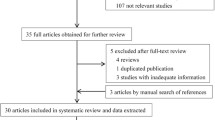Abstract
Neuroinflammation has been implicated in the etiology of Alzheimer’s disease (AD). Many studies have suggested that C(-889) T promoter polymorphism in one of the proinflammatory cytokine interleukin-1 (IL-1) encoding gene IL-1A may be associated with AD pathogenesis. To determine whether the polymorphism contributes to the risk for late-onset AD (LOAD) in Chinese, we carried out our investigation in 344 sporadic LOAD patients and 224 healthy controls. No statistical significant association was obtained between IL-1A C(-889) T polymorphism and LOAD and no statistical difference was found between cases and controls after stratification for apolipoprotein E allele 4 (APOE ε4) status. The results reveal that it is not likely that the IL-1A C(-889) T polymorphism is involved in AD pathogenesis in the Chinese population. Further studies of the associations between other IL-1A genetic polymorphisms and AD should be performed in a larger population and biologic functional analysis of IL-1A gene is required to verify the underlying roles of IL-IA in LOAD.
Similar content being viewed by others
References
Akiyama H et al (2000) Inflammation and Alzheimer’s disease. Neurobiol Aging 21(3):383–421
American Psychiatric Association (1994) Diagnostic and statistical manual of mental disorders, 4th edn. American Psychiatric Association, Washington DC
Blacker D et al (1997) ApoE–4 and age of onset of Alzheimer’s disease: the NIMH genetics initiative. Neurology 48(1):139–147
Blasko I et al (1999) TNFalpha plus IFNgamma induce the production of Alzheimer beta-amyloid peptides and decrease the secretion of APPs. FASEB J 13(1):63–68
Campion D et al (1999) Early-onset autosomal dominant Alzheimer disease: prevalence, genetic heterogeneity, and mutation spectrum. Am J Hum Genet 65(3):664–670
Du Y et al (2000) Association of an interleukin 1 alpha polymorphism with Alzheimer’s disease. Neurology 55(4):480–483
Gomez-Isla T et al (1996) Clinical and pathological correlates of apolipoprotein E epsilon 4 in Alzheimer’s disease. Ann Neurol 39(1):62–70
Green EK et al (2002) Are interleukin-1 gene polymorphisms risk factors or disease modifiers in AD? Neurology 58(10):1566–1568
Griffin WS et al (1989) Brain interleukin 1 and S-100 immunoreactivity are elevated in Down syndrome and Alzheimer disease. Proc Natl Acad Sci USA 86(19):7611–7615
Grimaldi LM et al (2000) Association of early-onset Alzheimer’s disease with an interleukin-1_ gene polymorphism. Ann Neurol 47(3):361–365
Hayes A et al (2004) A polymorphic variation in the interleukin 1A gene increases brain microglial cell activity in Alzheimer’s disease. J Neurol Neurosurg Psychiatry 75(10):1475–1477
Hedley R et al (2002) Association of interleukin-1 polymorphisms with Alzheimer’s disease in Australia. Ann Neurol 51(6):795–797
Hu XF et al (2002) Association between apolipoprotein E gene polymorphism and the patients with persistent vegetative state in the Chinese. Yi Chuan Xue Bao 29(9):757–760
Infante J et al (2007) Interaction between poly(ADP-ribose) polymerase 1 and interleukin 1A genes is associated with Alzheimer’s disease risk. Dement Geriatr Cogn Disord 23(4):215–218
Ki CS et al (2001) Lack of association of the interleukin-1-alpha gene polymorphism with Alzheimer’s disease in a Korean population. Ann Neurol 49(6):817–818
Kuo YM et al (2003) Lack of association between interleukin-1alpha polymorphism and Alzheimer disease or vascular dementia. Alzheimer Dis Assoc Disord 17(2):94–97
Li XQ et al (2004) Interleukin-1 gene cluster polymorphisms and risk of Alzheimer’s disease in Chinese Han population. J Neural Transm 111(9):1183–1190
Licastro F et al (2000) Gene polymorphism affecting 1-antichymotrypsin and interleukin-1 plasma levels increases Alzheimer’s disease risk. Ann Neurol 48(3):388–391
McDowell TL et al (1995) A genetic association between juvenile rheumatoid arthritis and a novel interleukin-1 alpha polymorphism. Arthritis Rheum 38(2):221–228
Mrak RE, Griffin WS (2001) Interleukin-1, neuroinflammation, and Alzheimer’s disease. Neurobiol Aging 22(6):903–908
Murphy GM Jr et al (2001) Rate of cognitive decline in AD is accelerated by the interleukin-1 alpha -889 *1 allele. Neurology 56(11):1595–1597
Nicoll JA et al (2000) Association of interleukin-1 gene polymorphisms with Alzheimer’s disease. Ann Neurol 47(3):365–368
Ohm TG et al (1995) Apolipoprotein E polymorphism influences not only cerebral senile plaque load but also Alzheimer-type neurofibrillary tangle formation. Neuroscience 66(3):583–587
Pearson JV et al (2007) Identification of the genetic basis for complex disorders by use of pooling-based genomewide single-nucleotide-polymorphism association studies. Am J Hum Genet 80(1):126–139
Rogers J (2000) An IL-1-alpha susceptibility polymorphism in Alzheimer’s disease: new fuel for the inflammation hypothesis. Neurology 55(4):464–465
Rothwell NJ, Luheshi GN (2000) Interleukin 1 in the brain: biology, pathology and therapeutic target. Trends Neurosci 23(12):618–625
Sando SB et al (2008) APOE epsilon4 lowers age at onset and is a high risk factor for Alzheimer’s disease; a case control study from central Norway. BMC Neuro 8:9
Saunders AM et al (1993) Association of apolipoprotein E allele ε4 with late-onset familial and sporadic Alzheimer’s disease. Neurology 43(8):1467–1472
Stewart WF et al (1997) Risk of Alzheimer’s disease and duration of NSAID use. Neurology 48(3):626–632
Tsai SJ et al (2003) Lack of association between the interleukin-1alpha gene C(-889)T polymorphism and Alzheimer’s disease in a Chinese population. Neurosci Lett 343(2):93–96
Wang HK et al (2007) Interleukin-1alpha and -1beta promoter polymorphisms in Taiwanese patients with dementia. Dement Geriatr Cogn Disord 24(2):104–110
Zhou YT et al (2006) Association between interleukin-1 alpha-889 C/T polymorphism and Alzheimer’s disease in Chinese Han population. Zhongguo Yi Xue Ke Xue Yuan Xue Bao 28(2):186–190
Acknowledgments
This research was supported by Natural Science Found of China (30270491) and the Funds for Key Sci-tech Research Projects of Guangdong Province [YUE KEJIBAN (2004) 08, (2007) 05/06-7005206], [YUE CAIQI (2003)209] of China.
Author information
Authors and Affiliations
Corresponding authors
Rights and permissions
About this article
Cite this article
Hu, Jl., Li, G., Zhou, Dx. et al. Genetic Analysis of Interleukin-1A C(-889)T Polymorphism with Alzheimer Disease. Cell Mol Neurobiol 29, 81–85 (2009). https://doi.org/10.1007/s10571-008-9299-5
Received:
Accepted:
Published:
Issue Date:
DOI: https://doi.org/10.1007/s10571-008-9299-5




